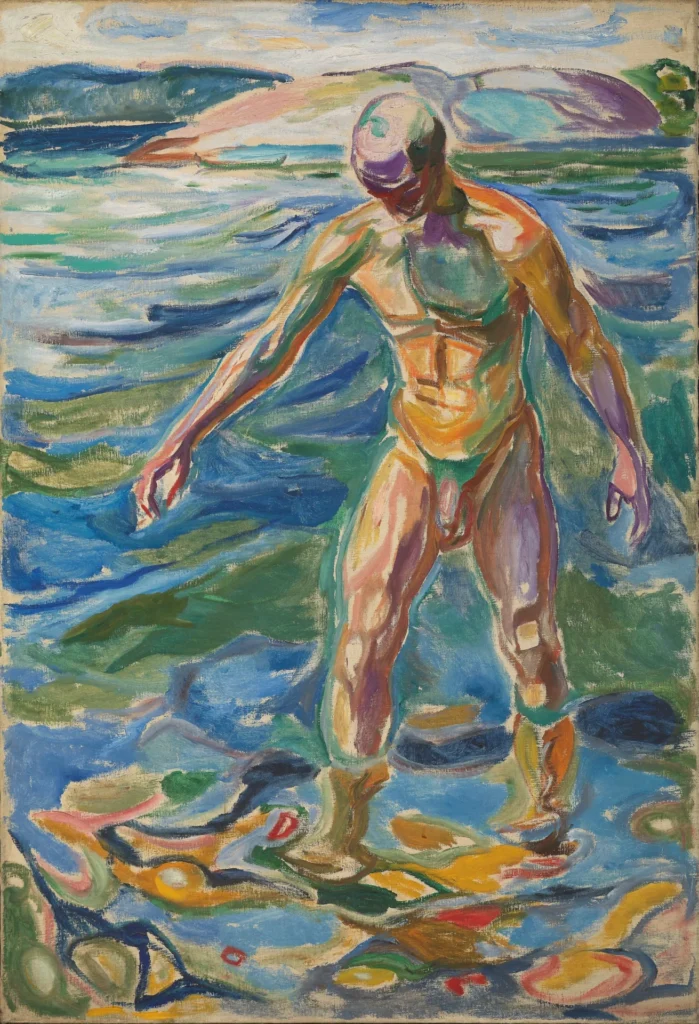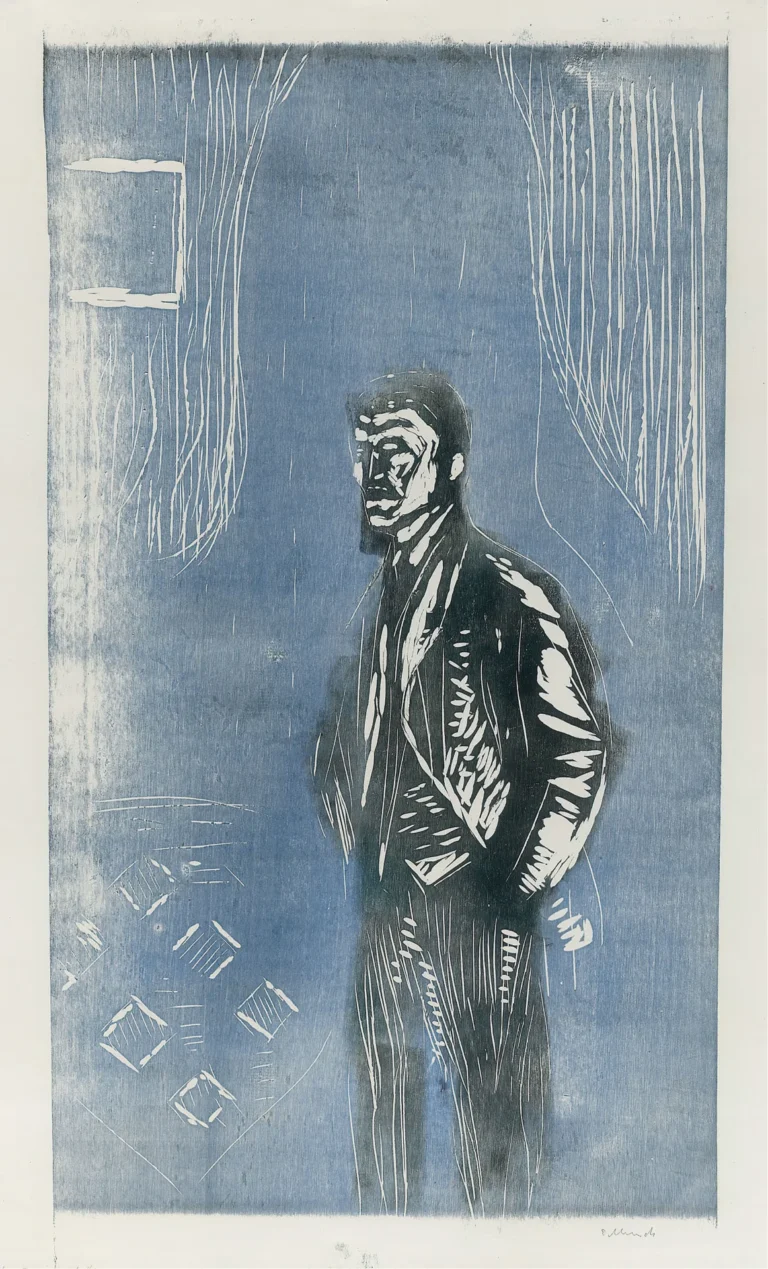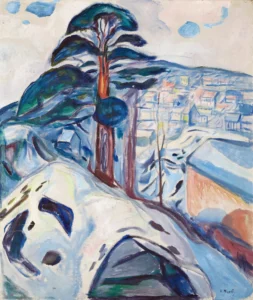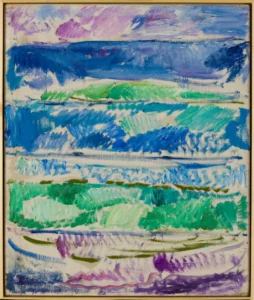Bathing Man (1918)
Created in 1918 by the celebrated Norwegian artist Edvard Munch, Bathing Man captures a muscular, naked figure poised dynamically as he emerges from the sea. The painting reflects the early 20th-century cultural fascination with health and vitality, emphasizing the natural environment and the human body as vessels for life. Munch, known for his emotional depth and exploration of the human condition, channels these themes into this striking composition, which resonates with the era's vitalist philosophy. Following its completion, the artwork was gifted to the National Gallery in Oslo in 1927, where it continues to be celebrated and appreciated.
Year 1918
About the Artwork
Bathing Man is a notable example of Edvard Munch's later works, wherein he shifted his focus toward themes of health and nature. Created amidst a backdrop of cultural enthusiasm for wellbeing and the outdoors, the painting presents a celebration of the natural human form, highlighting Munch's fascination with vitality. The muscular subject exudes strength and energy, representative of the philosophical undercurrents of vitalism that characterized the period. The painting emphasizes the connection between humans and the natural world, capturing the essence of the era’s shift towards outdoor activities and the spiritual rejuvenation offered by nature. Munch's donation of this piece to the National Gallery was a significant act, allowing public access to a work that perfectly encapsulates his artistic evolution and cultural commentary.
Did You Know
Edvard Munch’s artworks, including Bathing Man, often explored themes of vitality, health, and the connection between humans and nature, reflecting the era’s cultural movements.
Bathing Man embodies the vitalist philosophy that was prominent in the early 20th century, which emphasized instinct and the rejuvenating properties of nature.
In 1927, Edvard Munch gifted Bathing Man to the National Gallery in Oslo, ensuring that this significant piece remained accessible to the public for future generations.










